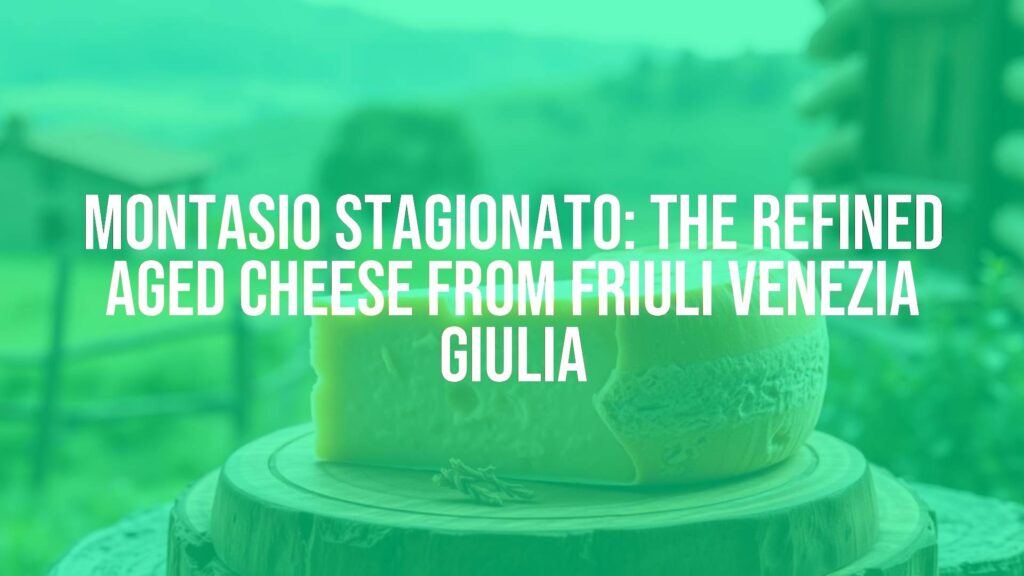Discovering Montasio Stagionato
Montasio stagionato is a celebrated Italian cheese hailing from the Friuli Venezia Giulia and Veneto regions of northeastern Italy. As an aged variant of the traditional Montasio cheese, it stands out with its firm texture, robust flavor, and rich cultural heritage. Appreciated for centuries, Montasio stagionato has earned Protected Designation of Origin (PDO) status, reinforcing its authenticity and safeguarding traditional production methods.
Defining Characteristics
Montasio stagionato distinguishes itself through a maturation period that extends well beyond four months, often reaching twelve months or more. The cheese develops a golden-yellow rind and a pale straw-colored paste with a texture that is both compact and slightly granular. Its taste profile intensifies with aging, balancing savory, nutty notes with a pleasant tang and fragrant, lingering aroma. This complexity sets it apart from younger, milder forms of Montasio.
Historical Context and Craftsmanship
The origins of Montasio cheese date back to the 13th century, when monks in the Julian Alps began refining cheesemaking techniques on the Montasio plateau. Over time, aging processes were perfected, resulting in the more robust stagionato style. Today, local dairies adhere to PDO regulations, using fresh cow’s milk sourced from the region. The milk is gently heated and combined with natural rennet before being pressed into characteristic wheels and left to age on wooden shelves, allowing the flavors to mature fully.
Gastronomic Uses and Flavor Pairings
Montasio stagionato is highly versatile and commonly enjoyed in both everyday meals and festive occasions. Its firm consistency allows it to be cut into wedges or grated, making it ideal for topping risottos, pasta dishes, and vegetable gratins. In Friuli, thinly shaved Montasio stagionato elevates simple dishes such as polenta or gnocchi, while in Veneto, it appears in hearty soups and rustic pastries. The cheese’s assertive flavor pairs beautifully with full-bodied red wines, strong lagers, and honey or fruit preserves that counterbalance its intensity.
Cultural Importance and Traditional Enjoyment
Montasio stagionato is a staple in local gastronomy, often featured on antipasto platters alongside cured meats like speck or prosciutto. Its presence at family gatherings and local festivals reflects a deep connection to the region’s agricultural identity. While it can be enjoyed at room temperature to fully appreciate its nuanced flavors, connoisseurs occasionally serve it warm—melted onto toasted bread or as part of frico, a traditional Friulian cheese crisp.
Serving Suggestions and Care
For optimal flavor, Montasio stagionato is best left out of refrigeration for at least an hour before serving, allowing its aroma and texture to shine. When pairing, try it with toasted hazelnuts or figs for a harmonious balance. Store the cheese wrapped in wax paper or a light cloth within a sealed container to preserve its subtleties while avoiding excess moisture. Because of its piquant character, only modest amounts are needed to enrich a cheese board or cooked dish.
Exploring Variations
The duration of aging imparts a spectrum of textures and flavors to Montasio. While “stagionato” refers to cheese aged over ten months, younger versions (“mezzano” and “fresco”) offer a softer bite and milder taste. Some artisans experiment further by extending the maturation period, crafting cheeses with crystalline microstructures and pronounced nuttiness. Each stage invites new gastronomic possibilities, but Montasio stagionato remains the definitive choice for those seeking depth and character in Italian alpine cheeses.

